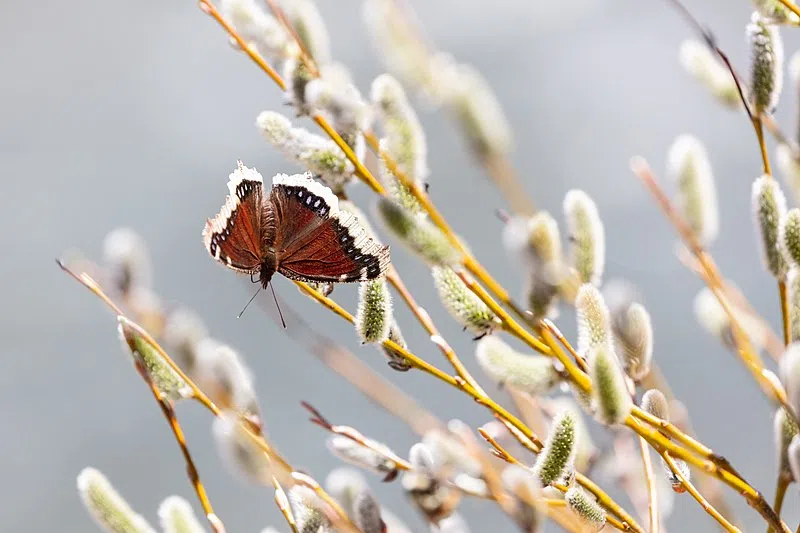By Anna Kovach, summer intern
When one hears mention of a willow tree, they probably picture the drooping, elegant branches of a weeping willow (Salix babylonica) swaying in a summer breeze. While the weeping willow is an attractive sight next to a quaint pond, willows (in the genus Salix) make up over 300 species—97 of which are found in North America—that are just as beautiful but often overlooked. Pussy willow (S. discolor), shining willow (S. lucida), and peachleaf willow (S. amygdaloides) are just a few species of willows native to Wisconsin. Bebb’s willow (S. bebbiana) is one species that can be found growing near the nature center, specifically along the Willow Trail. Visitors to this beloved trail are also greeted by numerous black willow (S. nigra), the limbs of these trees reaching toward one another and framing the pathway.
These trees are not just valued for their beauty; willows can serve as a host plant for hundreds of species of butterflies and moths, meaning that these insects rely on a willow tree as a place to lay their eggs and as a food source for larvae. One common species of butterfly that prefers to use willow as a host plant is the mourning cloak butterfly (Nymphalis antiopa). These butterflies are a deep maroon color with two stripes outlining the edge of their wings; the inner stripe is black with flecks of blue and the outer stripe is a brilliant yellow. Viceroy (Limenitis archippus), a mimic of the monarch butterfly, and the eastern tiger swallowtail (Papilio glaucus) are two other species of butterflies that may use a willow as a host plant. All three of these butterflies can be seen darting amongst and near the willows growing here at Woodland Dunes.
Willows can be a food source for many other different critters besides those looking for a host plant. The flowers of willows provide one of the first sources of nectar for pollinators emerging during early spring. Because so many insects are attracted to the willow flowers, these trees serve as rich hunting grounds for insectivorous birds, including the eastern phoebe and chickadees. Many birds eat the seeds of willows. Other birds, such as grouse, eat the buds. Deer, moose, and beavers may eat the leaves and twigs of willows. The yellow-bellied sapsucker, a species of woodpecker that migrates to Wisconsin for its breeding season, makes horizontal rows of holes along the trunk of the willow, which provides a source of sap for the bird and even adult mourning cloak butterflies.
We recently finished the selfless task of planting 750 trees within the nature preserve. One day, as I dug a suitable home for a young black willow tree, I couldn’t help but think about all the insects, birds, and mammals that would benefit from the willows—and all the other trees—that we planted this summer.












